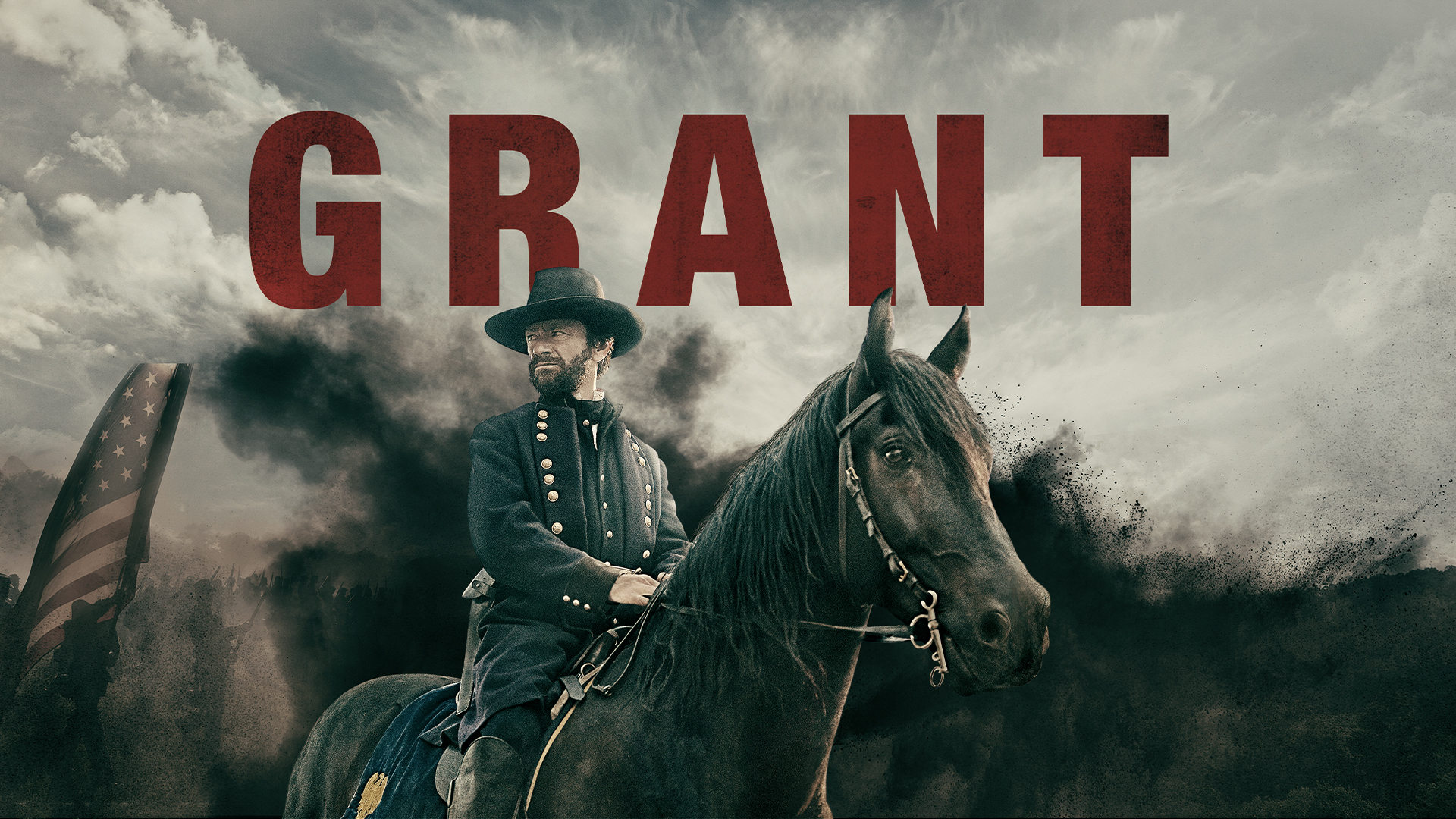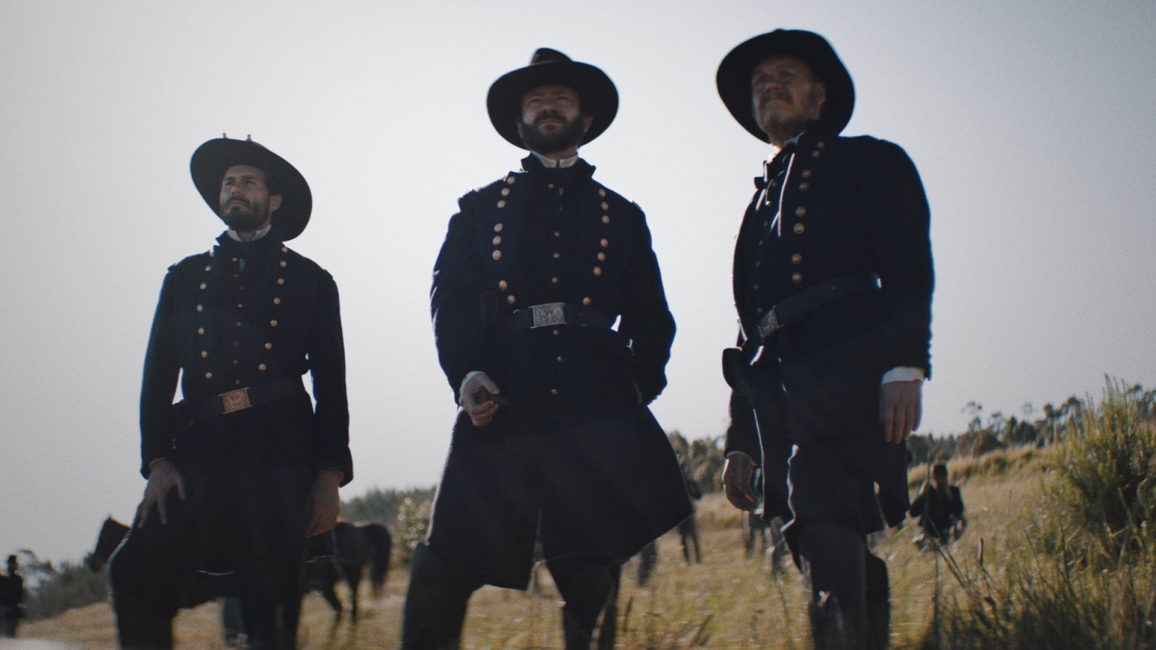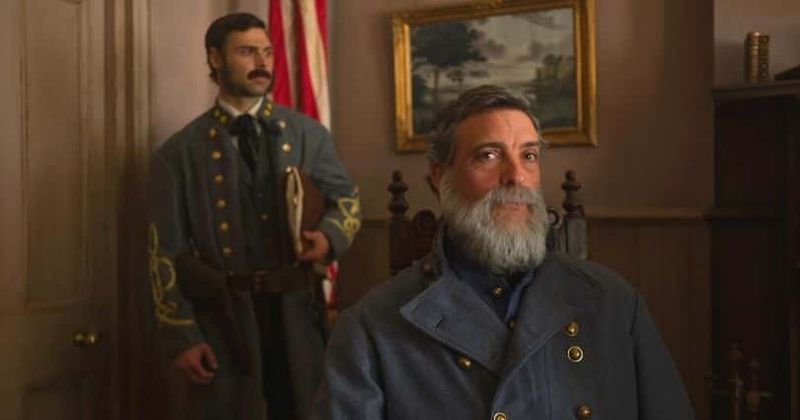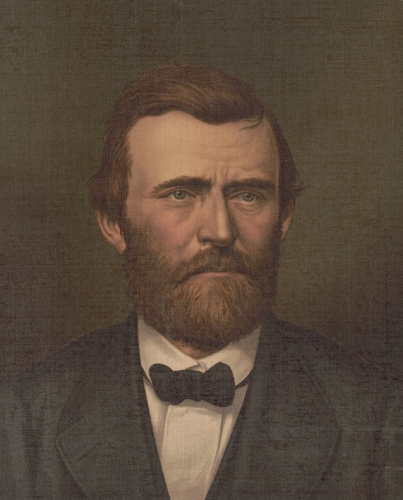
Long anticipated and much ballyhooed, History Channel’s May 2020 release of Grant, with Leonardo DiCaprio and Grant’s most recent biographer, Ron Chernow, as executive producers (no Lin-Manuel Miranda here), promises to introduce (yet again) the Civil War general and 18th president to the American public in a way that will change their understanding of him forever. This promotional approach is familiar. For the last 30 years we’ve heard that it’s been time for a new understanding of Grant, although a growing number of biographies and studies have been doing that work. In the spirit of Chernow’s own 2017 biography, we are promised yet again a revolutionary reconsideration of Grant, then treated to a tale that attempts to synthesize three decades of scholarship in six hours—divided into three episodes—including commercials.
In content and argument Grant differs little from the two-part program offered by PBS’ American Experience in 2002, which actually covered more ground. Currently a mainstream consensus about Grant the general and the president has revised his standing upward in the eyes of most observers, reflected most clearly in his rise from the bottom to the middle of presidential rankings. Both Chernow’s biography and the Grant documentary are best understood as cumulative expressions of a mainstream synthesis that has emerged over time, with several recent Grant biographies telling essentially the same story with minor variations. Grant’s value, properly understood, is in conveying that established understanding to a wider audience through cable television and streaming, an important step in securing that scholarly foothold in the popular mind. The less one knows about Grant, the more they’ll learn by watching Grant.
Viewers learn much more about the soldier and general than they do the president, and after the first episode they learn very little about the man’s private life. The first episode is perhaps most successful at capturing Grant’s story prior to the Civil War, although it overlooks some opportunities to tie his life to the events around him that led to that conflict. (One would never know that his father worked in a tannery alongside abolitionist John Brown; that he went to a private school run by John Rankin, who also assisted the Underground Railroad; that in St. Louis he knew the Blow brothers, whose father had once owned Dred Scott while the brothers were involved in Scott’s attempts to gain his freedom.) This is surprising, given the documentary’s efforts to present Grant as antislavery, perhaps too much so and too quickly.

Ulysses S. Grant (center) in a scene from History Channel’s “Grant”
Once the Civil War begins, we are treated to scenes of battles and discussions at headquarters, most memorably when Grant visits Henry W. Halleck at the latter’s headquarters in a scene that should have been sponsored by A-1 Steak Sauce. Grant’s relationship with Abraham Lincoln is treated uncritically in a narrative that retells the tale of Grant stumbling through Belmont, winning at Fort Donelson, surviving at Shiloh, and overcoming adversity to take Vicksburg. We see nothing of the scheming to replace him or the spies sent west by Lincoln to keep an eye on him, or the controversial General Orders No.11 expelling Jews from his command. Grant’s family nearly disappears from view altogether, although Julia and his eldest son Fred were often at headquarters (Fred accompanied his father during the Vicksburg Campaign and was hit by a spent ball). In short, military events, not themes, often drive the narrative.
As one might predict, after the Union victory at Chattanooga (where Grant receives the lion’s share of the credit), Lincoln calls Grant east to take command of all the armies of the United States with the personal task of taking on Robert E. Lee. A detailed recounting of the fighting at the Wilderness, fast forwarded to Cold Harbor, then to crossing the James, followed by a more deliberately paced telling of the Crater and the remainder of military operations all the way through to Appomattox, comes at the expense of Grant wrestling with political generals, dealing with prisoner exchanges (including the treatment of U.S. black soldiers who were captured), and how Grant’s plan to defeat Lee underwent modifications as he addressed other issues.
Noting such omissions is not necessarily a criticism of Grant. To be sure, fewer commercials and fewer previews of coming attractions would have opened more time to address more topics, but one wonders what story the documentary really wants to tell. A battle-after-battle narrative offers an incomplete understanding of Grant the commander or of his understanding of the conflict in which he was engaged. Yes, eventually we make our way to Appomattox, followed by Lincoln’s assassination—and then we race to Grant’s presidency in a matter of minutes, largely sidestepping his involvement in Reconstruction during the Johnson administration, his growing understanding of his political role, and how he attempted to balance reconciliation with racial justice.
By the time Grant looks at President Grant, we are in the program’s last hour. That fact is a product of previous choices on what to cover and for how long. The result is that the narrative races through Reconstruction, neglecting the rest of Grant’s presidency (depression and economic policy; foreign policy, including the proposed annexation of the Dominican Republic; the recasting of the Republican Party) or mentioning it in passing (federal policy toward Native Americans). The brief discussion of corruption during his administration leaves one wondering what actually happened. In exchange for these scanty overviews, one might have hoped for a more insightful, nuanced discussion of Reconstruction, but there’s no time for that. Although we learn that Grant undertook a world tour, we never learn that he sought a third term; the disaster of Grant and Ward, the heroic writing of his Memoirs, and death after a gallant struggle with throat cancer as he raced to complete his book are covered in mere minutes, followed by an overview of the vicissitudes of his reputation. Coverage choices under constraints have consequences. Life is unfair.

Robert E. Lee prepares to surrender his army in a scene from History Channel’s “Grant”
One wonders whether the reservations one might express about Grant and the publicity that surrounds it might be better directed at the formats such documentaries take nowadays. For example, is Grant’s extensive use of reenactments useful in advancing the story, or are scenes of bloodshed (complete with warnings that what viewers are about to see may be disturbing) little more than “combat porn,” especially given viewer criticism about uniforms, formations, weaponry, terrain, and even weather and time of day? Just as the complaints are predictable, so are the efforts to dismiss them, although I wondered why they could not get Grant’s Civil War uniform (and the way he wore it) right. (Grant wears the same outfit throughout the war, with only the stars on his shoulder straps changing, with the coat buttoned in a way he did not button it; those looking for Grant to show up at Wilmer McLean’s house in a private’s blouse adorned with shoulder straps will be disappointed to see that Grant and Lee are both dressed up.)
Defenders of such deficiencies in documentaries usually cite limited budgets—as if that was in itself a sufficient excuse—or belittle what can seem to be picky criticisms. Yet that predictable response is equally tiresome and trite. Why not tailor what you can do to the budget and time constraints you have and then do it right (perhaps in more limited fashion) rather than make excuses for what one secretly knows to be substandard or mediocre? What do such flawed representations bring to the show in the first place?
Perhaps we should also revisit the matter of Grant’s talking heads. The purpose of a talking head is to present the obvious in a manner that seems authoritative, engaging, and at times dramatic. It’s an acting exercise in appearing knowledgeable and insightful, even profound. Some people excel at this. When the narrative turns to issues of race and slavery, expect to see a more diverse assemblage of talking heads; when it comes to battles and campaigns, expect to see experts who are usually male and usually white. Grant usually falls into that trap, and the exceptions highlight the practice. People debate the choices for talking heads (many individuals on social media have noted and speculated about the absence of several experts’ faces in Grant) as if that would have materially changed the story the directors and producers wanted to tell. At stake are matters of credibility and perspective—or so we would like to think. I found refreshing the appearance of people who aren’t the usual suspects. After all, talking heads are simply a means to an end. Just like reenactors, they are supposed to give an aura of authenticity as well as authority to the story the producers, directors, and scriptwriters want to tell. Thankfully bookshelves as background have been banished in Grant, although we are treated to the occasional side table with a few books. Still, aren’t there better ways to go about this?

A portrait of Ulysses S. Grant from 1877
Perhaps the problem is a lack of imagination in format, framing, and presentation. Many of the errors (such as Chernow’s assertion that blacks first voted in large numbers after the ratification of the 15th Amendment in 1870, when in fact they had voted in large enough numbers to provide Grant with his popular vote majority in 1868) are products of sloppiness that become laziness when the finished product is not vetted for accuracy. Of course you can’t tell every story or give every story the attention someone thinks it is due, but you do have to decide which stories you want to tell and then tell them well. The lavish attention paid several battles, complete with reenactors, came at the expense of giving Reconstruction the more thoughtful and careful attention it deserved. Which do you think viewers should know more about: the siege of Corinth in the spring of 1862 or the Colfax massacre and political violence in Louisiana throughout Grant’s second presidential term, events about which Grant spoke powerfully in 1874 and 1875? Exactly how much time did Shiloh consume, and could that time have been better spent elsewhere? And what happened to the discussion of Grant’s drinking, long of interest to Chernow (who lavishes much attention to it in his book), after Grant’s resignation from the army in 1854? It nearly disappeared, except when John Rawlins was around.
By their very nature documentaries cannot cover every detail given limitations of time, format, and audience interest. Indeed, it is usually conceded that they are flawed and incomplete, but that if they excite curiosity and interest in a subject, then they are worthwhile. Let’s accept that as a given. Understanding that, why not tell a story that arouses interest by design, supported by websites that offer a more extensive, deeper treatment? (History Channel’s website, History.com, offers some additional commentary gathered over the years, but it’s scattered and is not as successful as some previous efforts to present online support for a documentary.) Given today’s technology, why not use the documentary as aired explicitly as a gateway and an introduction, telling gripping stories that spark viewer curiosity and can be addressed on other platforms? Why repeatedly produce a product in a format that people already concede is flawed and has inherent limitations, and then defend the consequences by characterizing criticism as nitpicking or unreasonable? Why can’t documentaries reflect the same sort of innovative thinking that marked Grant’s generalship?
Grant satisfies the usual expectations associated with documentaries, and sparks the usual debates about them. It missed an opportunity to do so much more.
Brooks D. Simpson is ASU Foundation Professor of History at Arizona State University and the author of several studies on the Civil War and Reconstruction era.


Good article, Simpson. I found the docudrama good entertainment, but bad history.